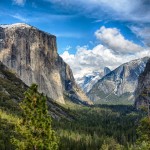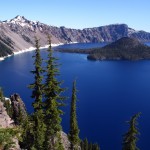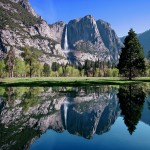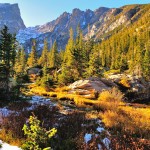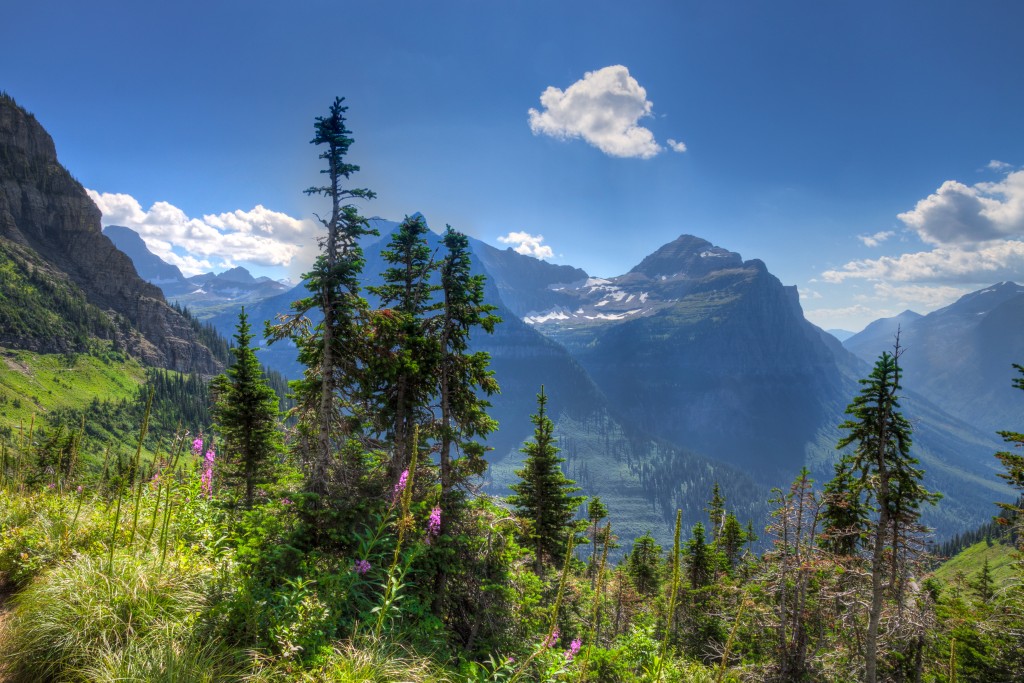Sequoia National Park- A Geological Marvel
America’s second National Park was established in 1890, just 18 years after the foundation of the first – Yellowstone (1). Significantly smaller than its elder counterpart at just over 404,000 square acres, it is situated in California in the southern Sierra Nevada and is managed jointly with Kings Canyon National Parks. Today, both areas make up one of the world’s most important International Biosphere Reserves; it is also a designated wilderness (around 97% of the landscape) and very few roads cross the region (2).
It is most famous for its giant Sequoia trees and most conservation work there centres on the ecosystem of these truly astonishing specimens and other flora and fauna that come to rely on their cover. Sequoia represent some of the oldest and largest trees in the world and the park was formed specifically to protect the sequoiadendron giganteum species (2). Today, most of the state forest of California consists of this remarkable tree (3, p9).
Sequoia National Park is also highly important to geologists thanks to an extensive network of marble caves (around 240) and to those who study the animals and plants that live within the cave network; it’s important to arborists interested in other tree species; to biologists of all disciplines; to botanists, entomologists and many others. It also has an interesting history that has helped shed light on prehistoric North America.
History of Sequoia National Park
It’s known that Native American tribes of prehistory settled Sequoia National Park seasonally. Anthropologists and archaeologists have found material remains suggesting hunting, foraging and settlement over thousands of years (4) – including a number of rock art examples (5). Of particular interest is the granite Moro Rock that towers above the national park and a number of prehistoric sites have been preserved around this natural icon.
European settlers did not arrive in Sequoia until around 1850 and unfortunately, they brought smallpox with them which had a terrible effect on the local Native American populations. One of the first European settlers was a man by the name of Hale Tharp. He fell in love with the area and famously carved his homestead out of a fallen tree; he respected nature and saw what danger loggers could post to the ancient trees. He was known locally to have fought off loggers in his lifetime (6).
By 1880, the Keweah Colony was founded in the area and they began immediate logging, expecting the giant trees would be a staple of their industry and economy (2). Yet this was to be short lived as they found sequoia wood splintered too easily compared to other native soft wood species and would not have been good for use in manufacturing. It was shortly after that Sequoia became a National Park and was afforded all the rights and protections that that meant, specifically to protect the trees from any more logging – even if in reality it had already stopped due to a lack of functional use (2). Initially, the area was protected by the US military but in 1916 (and perhaps American entry into World War I meant that troops could not be spared to protect the area), the National Park Service was formed to oversee its protection and administration.
It was late coming as far as exploring the great forest was concerned, no official exploration took place until 1903 and that was notable because the Captain who led the expedition was then the only commissioned African-American officer in the US military (2). Tourism would not come arrive in the park until the 1920s when the first major highway allowed the population to take to their motor cars to see the wonders of the natural countryside.
In 1940, President Franklin D. Roosevelt expanded the sphere of the existing National Park adding King’s Canyon into the service’s remit. Since WWII, the two areas though divided geographically, are administered jointly as a single National Park Service.
The Flora of Sequoia National Park
The most obvious noticeable plant species is the Sequoia itself, the main occupant of the giant forest and the very reason the park was created (2). Its crowning piece is known as General Sherman, a goliath of a specimen at a towering 275ft – and estimated to be in the region of anything between 2300 and 2700 years old (7). To put that in perspective, it was around 200 years old at the birth of the Roman Republic.
Not that the Sequoia is the only tree or only plant to occupy the National Park area, though it is clearly the most dominant. There is much variation in the landscape and ecology between the King’s Canyon and the varied topography of Sequoia and it contains some 1200 species and over 1500 taxa (8). It contains oak forest, alpine uplands, mountain regions, subtropical savannah and temperate plains. Like many other natural landscapes, it has a problem with introduced species and in the 19th century, a number of non-native grasses were introduced. Today, the National Park Service manages and controls in order that they do not upset the delicate ecology of the park. It is believed that the isolated and varied nature of the Californian topography is very conducive to the islands effect which is suitable for plant speciation (9). This makes plant protection and colonization particularly difficult, especially in light of the introduction of European flora and of plants native to eastern and central states.
One of the most interesting plants in the park is the chaparral, a colonial shrub found mostly in California but also in northern Mexico. It is the most characteristic shrub in the state and is therefore an important element in the ecosystem of the state and other native species, particularly in the foothills of the National Park (8).
Flora Conservation Issues
Key to the conservation within Sequoia National Park is the preservation of the giant trees which has been its mission since the inception of the governing body. Each new year brings new challenges and the nature of climate change is expected to bring further conservation issues in future. Data collection of how environmental events such as drought (which is now an ongoing problem in California) affect the giant sequoias is ongoing (10) it researchers are already measuring the effects of climate change on the trees. One of the biggest concerns is that there will be a significant decline in the number of organisms for sequoia and for the native blue oak species (11). No particular species is considered threatened at present, but the varied nature of the landscape – from the lowlands to the highest uplands which incorporates several different temperate zones – is likely to see fundamental changes in light of ongoing droughts and the long-term effects of climate change. As with other National Parks and other environmentally sensitive areas, changes to the flora patterns and makeup is likely to have knock on effects for the fauna – some of which are already considered at risk or endangered.
As also with other National Parks, there remain ongoing concerns about non-native and invasive species. One species of particular concern is the foxglove which is native to Europe and adorns many ornamental gardens, though it also grows wild in temperate woodlands not dissimilar to the great forests of Sequoia (12). It is a particularly aggressive and though it is contained to a few areas where the conditions are closest to its native European habitat, it is everywhere. It grows aggressively and extensively along waterways and since 1999, there has been a concerted effort to remove it from the National Park. Unfortunately, it is unlikely to be eradicated due to a large colony on privately owned land nearby where the owner is under no obligation the remove it. Italian Thistle, Spanish Broom, Bull Thistle are other examples of European native species taken into the park during the late 19th and early 20th centuries that are now a threat to native species.
The Fauna of Sequoia National Park
As already discussed, the topography of the National Park Area is incredibly varied from temperate lowlands, northern uplands and sub-tropical savannah. This means that the fauna is as diverse as the flora. Extensive studies have been carried out on native and introduced vertebrate species but invertebrates remain largely unstudied (13). This is unfortunate because the extensive cave system is rich in invertebrate life and in some cases there are species that are found nowhere else in the world. We are missing a lot of information about their numbers and status.
Typical fauna species are the black bear, bighorn sheep (which is threatened), wolverine, red fox and the black hare (though these latter two seem rare and may be dwindling in numbers) (14). The park is also home to the famous Flying Squirrel and a number of species of bat which have protection in most developed countries.
Staying in the air, Sequoia is famous for many species of raptor – or birds of prey – thanks to the warm air of the California coast and the varied topography of the parks. This means that Sequoia is home to both seasonal and year-round species. Monitoring and tagging takes place to keep an eye on numbers in conjunction with international efforts to preserve some of these endangered and at risk species (15). You will find Red-Tail Hawks, Northern Harriers and American Kestrels amongst the many raptors in the parks. In the fall, you may see up to 20 different species in one small area.
Fauna Conservation Issues
Five native species are already extinct within the park with over a hundred more are rare or uncommon in terms of numbers and sightings (13). Six native species are considered particularly at risk (16) and they are: Californian Red Legged Frog, Coho Salmon, Mission Blue Butterfly, San Bruno Elfin Butterfly, San Francisco Garter Snake and the Western Snowy Plover.
It has been noted that the Californian Red Legged Frog has been eliminated from over 70% of its natural habitat within the park. The species were prized for their legs but today they are covered under the Endangered Species Act. In 2013, a major report was released to tackle the problem of dwindling population; it also proposed a recovery plan with a view to increasing population enough that it could be delisted as an endangered species (17). Part of this recovery plan included the promotion of natural habitat, removal of invasive species that were proving to be an obstacle to the Californian Red Legged and mitigation of the effects of climate change.
The Western Snowy Plover is a small wading bird that largely breeds in coastal region right along the western seaboard; it is particularly concentrated in California, especially in Sequoia. It’s breeding patterns have been disrupted due to human populations and animal species using the beaches that are its natural habitat (18). It has been endangered since the 1980s; in 2012, large areas of land in California, Oregon and Washington State were designated as critical habitat. This means that those designated areas will now require and receive special protection in order to encourage breeding for this endangered species.
Ongoing Conservation Challenges
There are a number of conservation issues within Sequoia and Kings Canyon National Park. The first is the ongoing problems surrounding climate change. Continued Californian drought is expected to put a lot of stress on major flora and fauna; it is known that the sequoia trees are experiencing difficulty because of this drought. Though they are not yet in danger, a lack of climate change mitigation and continued drought may present problems in the future.
The second challenge is being fuelled by climate change but could also have become problematic in the result of considerable and severe natural processes. Some species within the park have evolved themselves into a niche – they only live within certain areas of the park. Climate change will upset the delicate balance of these areas and create problems for these niche species.
The third is a lack of breeding grounds outside the park – sometimes outside of the state or outside of the USA entirely. Though there is not much that the National Park Service can do about geographical areas over which it has no authority, more understanding is needed that ecologies do not exist within a bubble – and neither do the efforts taken by a single National Park or government; there are knock on effects. State, national and international laws are needed.
The fourth is poaching. Though we tend to think of this as hunting, far more common is the collection of butterfly eggs (19). This is illegal but notoriously difficult to prevent – and is especially critical for endangered butterflies. There is some evidence that poachers are active in Sequoia National Park removing parts of trees to collect eggs of specific butterflies. This is not just damaging to butterfly numbers, but also to protected trees.
Sources
(1) http://www.nps.gov/seki/learn/index.htm
(2) http://www.nps.gov/seki/learn/historyculture/index.htm
(3) http://www.fs.fed.us/pnw/pubs/pnw_rb197.pdf
(4) http://users.stlcc.edu/mfuller/sequoia.html
(5) http://search.proquest.com/docview/304899812/abstract
(6) http://www.nps.gov/seki/learn/nature/plants.htm
(7) http://www.fs.fed.us/psw/publications/documents/psw_gtr099/psw_gtr099a.pdf
(8) http://www.npca.org/news/magazine/all-issues/2013/fall/gentle-giants.html
(9) https://alumni.berkeley.edu/california-magazine/winter-2014-gender-assumptions/giving-out-trees-drought-stressed-sequoias-and
(10) http://www.nps.gov/seki/learn/nature/animals.htm
(11) http://www.nps.gov/seki/learn/nature/mammals.htm
(12) http://www.parksconservancy.org/conservation/plants-animals/raptors/
(13) http://www.parksconservancy.org/conservation/plants-animals/endangered-species/
(14) http://www.fws.gov/arcata/es/birds/WSP/plover.html






